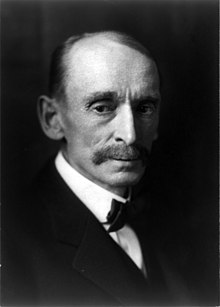William R. Day
| William R. Day | |
|---|---|
 |
|
| Associate Justice of the Supreme Court of the United States | |
|
In office February 23, 1903 – November 13, 1922 |
|
| Nominated by | Theodore Roosevelt |
| Preceded by | George Shiras |
| Succeeded by | Pierce Butler |
| Judge of the United States Court of Appeals for the Sixth Circuit | |
|
In office February 28, 1899 – February 23, 1903 |
|
| Nominated by | William McKinley |
| Preceded by | Seat established |
| Succeeded by | John Richards |
| 36th United States Secretary of State | |
|
In office April 28, 1898 – September 16, 1898 |
|
| President | William McKinley |
| Preceded by | John Sherman |
| Succeeded by | John Hay |
| United States Assistant Secretary of State | |
|
In office May 3, 1897 – April 27, 1898 |
|
| President | William McKinley |
| Preceded by | William Rockhill |
| Succeeded by | John Moore |
| Personal details | |
| Born |
William Rufus Day April 17, 1849 Ravenna, Ohio, U.S. |
| Died | July 9, 1923 (aged 74) Mackinac Island, Michigan, U.S. |
| Political party | Republican |
| Spouse(s) | Mary Elizabeth Schaefer |
| Children | 4 (including William and Stephen) |
| Education | University of Michigan, Ann Arbor (BS) |
| Signature | |
William Rufus Day (April 17, 1849 – July 9, 1923) was an American diplomat and jurist, who served for nineteen years as a Justice of the Supreme Court of the United States.
Day was born in Ravenna, Ohio, son of Luther Day of the Ohio Supreme Court. He graduated from the University of Michigan in 1870 and spent the following year in the school's law department. He settled in Canton, Ohio in 1872, where he began practicing law in a partnership with William A. Lynch. For twenty-five years, Day worked as a criminal and corporate lawyer in the growing industrial town while participating in Republican politics.
During these years, Day became a good friend of William McKinley. Day became McKinley's legal and political adviser during McKinley's candidacies for the Congress, the governorship of Ohio, and the presidency of the United States. After he won the presidency, McKinley appointed Day to be Assistant Secretary of State under Secretary of State John Sherman. Sherman was considered to be ineffective, and in 1898, President McKinley replaced Sherman with Day
Five months later, Day vacated his cabinet position to helm the United States Peace Commission formed to negotiate an end to the Spanish–American War with Spain. After the Spanish–American War was declared, Day had argued that the Spanish colonies, other than Cuba, should be returned to Spain, contrary to McKinley's decision that the United States should take over from Spain control of the Philippines, Puerto Rico, and Guam. Day, however, negotiated peace with Spain on McKinley's harsher terms. His final diplomatic effort was to lead the United States Peace Commission into Paris, France and sign the Treaty of Paris ending the war.
...
Wikipedia
